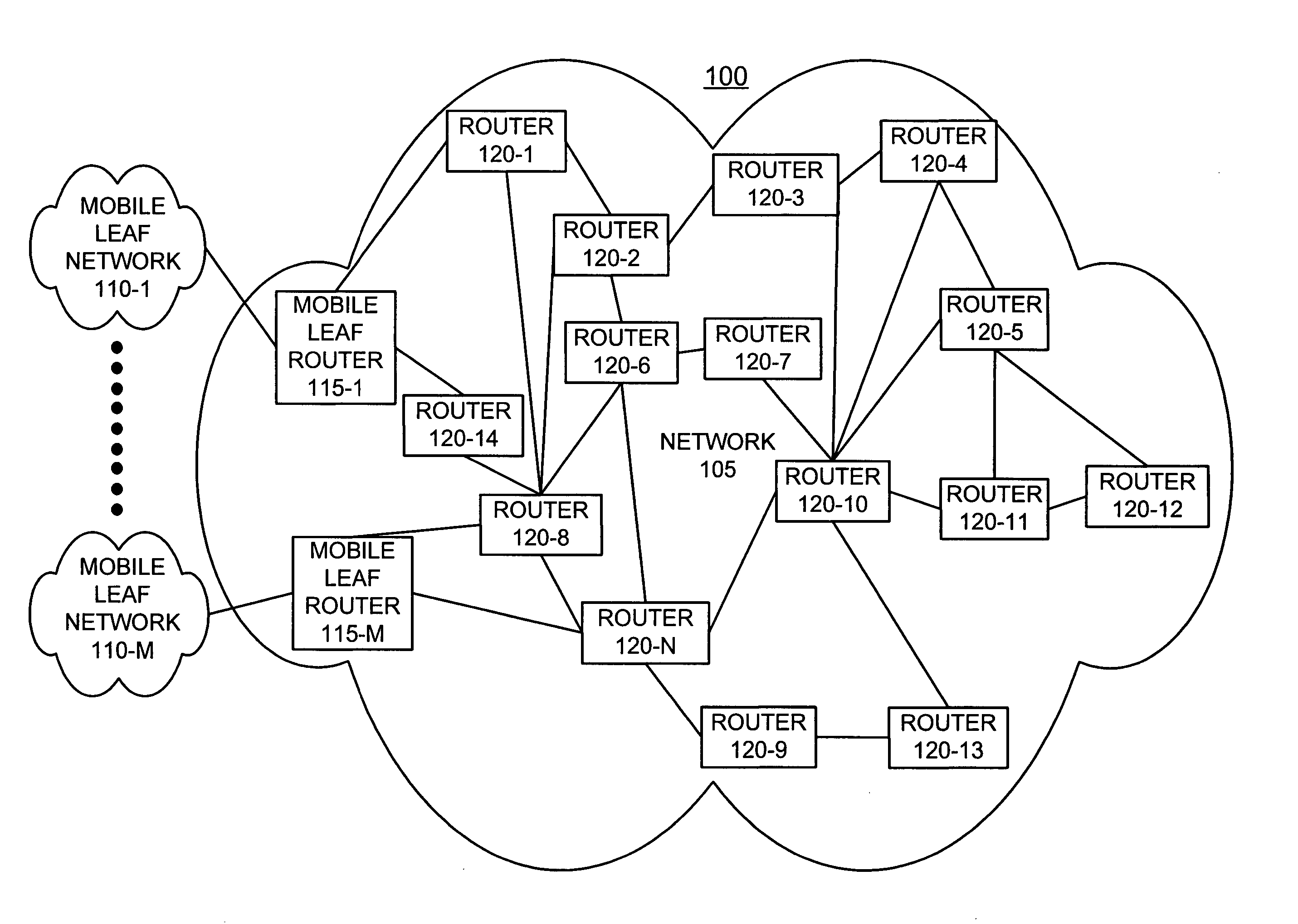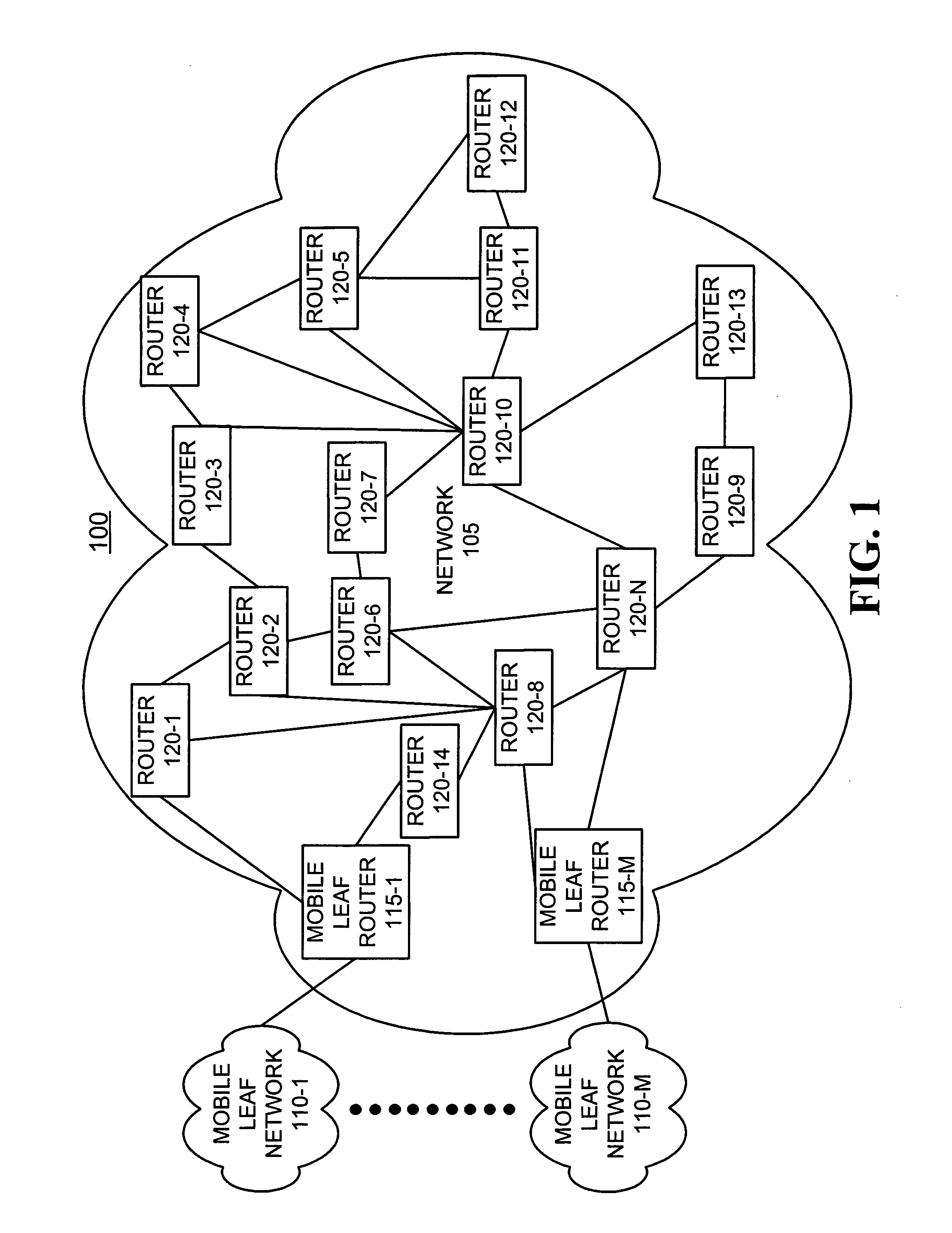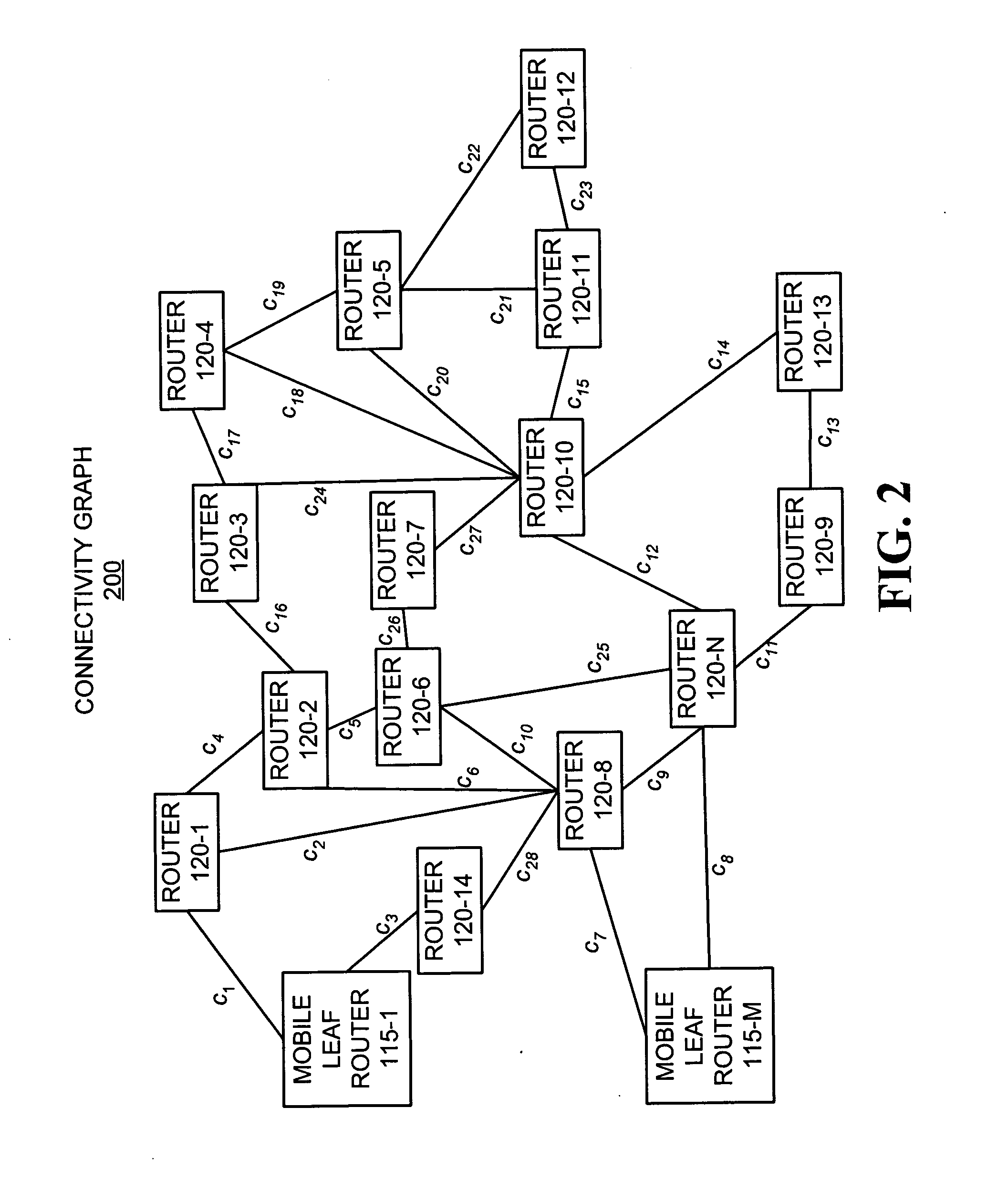Systems and methods for forming an adjacency graph for exchanging network routing data
- Summary
- Abstract
- Description
- Claims
- Application Information
AI Technical Summary
Problems solved by technology
Method used
Image
Examples
Embodiment Construction
The following detailed description of the invention refers to the accompanying drawings. The same reference numbers in different drawings may identify the same or similar elements. Also, the following detailed description does not limit the invention. Instead, the scope of the invention is defined by the appended claims and their equivalents.
Systems and methods, consistent with the present invention, modify the basic OSPF adjacency graph construction algorithm to optimize it for use over a multi-hop, multi-access packet radio network, while maintaining compatibility with standard OSPF over other networks and preserving the basic OSPF model for reliable flooding of routing information.
Exemplary Network
FIG. 1 illustrates an exemplary network 100 in which systems and methods, consistent with the present invention, may construct an adjacency graph that may be used by routers for exchanging routing advertisements. Network 100 may include an autonomous system (AS) that may include a ...
PUM
 Login to View More
Login to View More Abstract
Description
Claims
Application Information
 Login to View More
Login to View More - R&D
- Intellectual Property
- Life Sciences
- Materials
- Tech Scout
- Unparalleled Data Quality
- Higher Quality Content
- 60% Fewer Hallucinations
Browse by: Latest US Patents, China's latest patents, Technical Efficacy Thesaurus, Application Domain, Technology Topic, Popular Technical Reports.
© 2025 PatSnap. All rights reserved.Legal|Privacy policy|Modern Slavery Act Transparency Statement|Sitemap|About US| Contact US: help@patsnap.com



